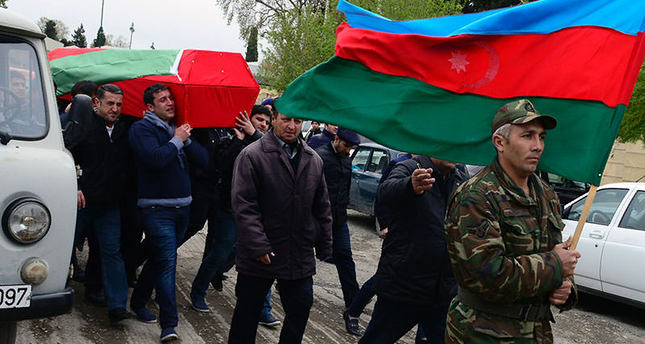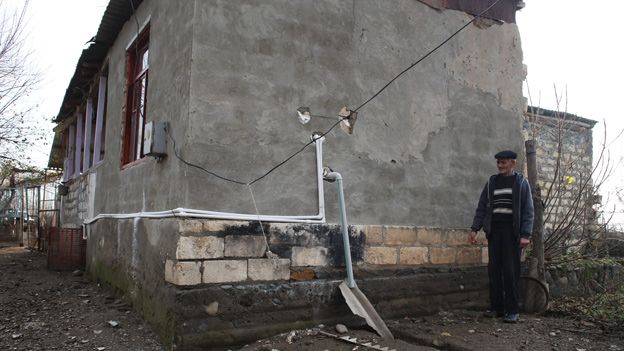Nagorno-Karabakh: a Resolution Is Completely Off the Radar!
External Relations 25 April 2016Nagorno-Karabakh is a region centred in southern Caucasus, without any access to the sea, but still relevant for the peaceful resolution of a long lasting conflict in the area – on the doorstep of Europe.
Everything begins with the war erupted in 1992 between the majoritarian Armenian population – supported by the Armenian Republic – and the Republic of Azerbaijan. The conflict really exploded after many tragic years of suffering. Since 1988, both Armenians and Azerbaijanis conducted violent actions and ethnic cleansing to affirm their own supremacy over the population in Nagorno-Karabakh.
The real conflict started immediately after the Nagorno-Karabakh Parliament took the decision to declare the birth of Nagorno-Karabakh – Artsakh Republic. The juridical basis for such decision was a URSS law in force at that time. Under this law – passed on 3 April 1990 (Register of the Congress of Deputies of URSS and the Supreme Soviet, n.13, p.152) – an autonomous region within the territory of a Republic seceding from URSS had the right to choose its own destiny and to effectively decide whether to follow the aforementioned Republic.

Men carry coffin of Azerbaijan’s serviceman, who was killed on April 2 during clashes between Armenian, Azeri forces in Armenian-seized Azerbaijani region of Karabakh (AFP)
It is time now to briefly consider the evolution of the entire context. On 30 August 1991, Azerbaijan decided to leave the Soviet Union and give birth to the Azerbaijani Republic. On 2 September, the Soviet of Nagorno-Karabakh finally decided not to follow the Azerbaijani path and voted for the creation of a new and independent state. On 6 January 1992, the Republic came into existence for its first time. However, at the end of the same month, Azerbaijan started bombing the region. At the end of the war, in 1994, Nagorno-Karabakh officially declared itself a republic de facto, even though it was not recognised by the International Community yet. The Azerbaijani Government has often expressed its concerns about the situation and has consequently demanded the principle of territorial integrity to be applied. On the other hand, Armenians have demanded the application of the principle of self-determination of peoples.
Armenians living in Nagorno-Karabakh strongly believe that the region has never been officially a part of the Azerbaijani Republic. In facts, even when the Azerbaijani Government speaks about the situation in Nagorno-Karabakh, it always refers to the period of the first democratic republic, from 1918 to1920. At that time, Karabakh were never cited in any documents, since only afterwards this region was assigned to Soviet Azerbaijan, in 1921. Various resolutions of the UN Security Council have called for the withdrawal of occupation forces from the region. However, they have never been implemented and relations between Armenia and Azerbaijan are not at their best nowadays.
Speaking of a “frozen conflict” is not possible since, from the immediate aftermath of the war in 1994 until the present days, analysts and diplomats cannot find those “frozen” peculiarities in Caucasus. Everything is moving in Nagorno-Karabakh, everything is on fire.
In August 2015, a new escalation of violence spread in the region, due to some events. Both Armenians and Azerbaijanis blamed each other over the responsibility for re-starting the conflict. Anyway, it seems that Azerbaijan has something to hide to the entire International Community. Among other things, the fact that Armenians troops have lost several relevant positions in Nagorno-Karabakh, during the very first day of the fight. Furthermore, an Azerbaijani helicopter has been found in the territory of the de facto Republic – a voice that has been confirmed by Armenian media.
Another important event coincided with this already complex crisis. In Iran, three mortar attacks involved the village of Khodaafarin in the north-western Iran, close to the border. As a reaction to this incident, the Iranian Ministry of Defence spoke with his Azerbaijani and Armenian counterparts, asking for peace in the region – without any follow-ups.
All this looks very much like a military escalation, but it is more than that, as diplomacy and media are also involved. Propaganda plays a strong role in both countries. In the wake of the fights, Joe Biden, US Vice President, privately met the President of Azerbaijan, Ilham Aliyev, and his Armenian counterpart, Serzh Sargsyan, in Washington. The aim of this meeting was to look for a concrete compromise, so to develop a true peace-building process. Nevertheless, peace in Nagorno-Karabakh is still today nothing more than a blurred dream on the doorstep of Europe.
For other news on Nagorno-Karabah, read “Pope Francis about to Visit South Caucasus Afflicted by War“



